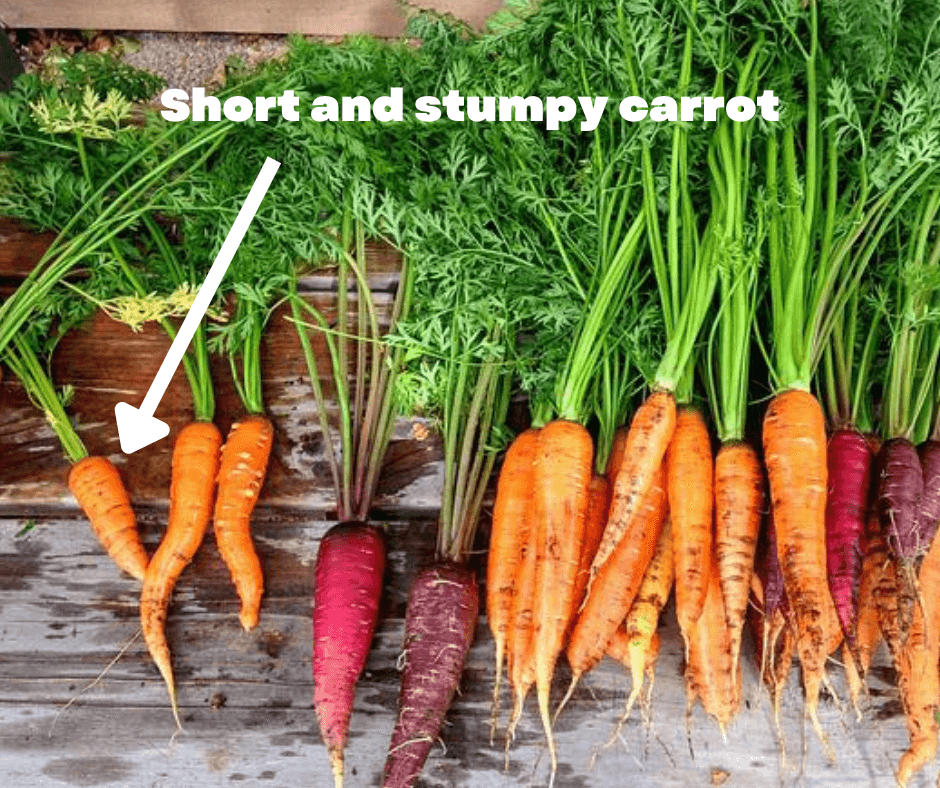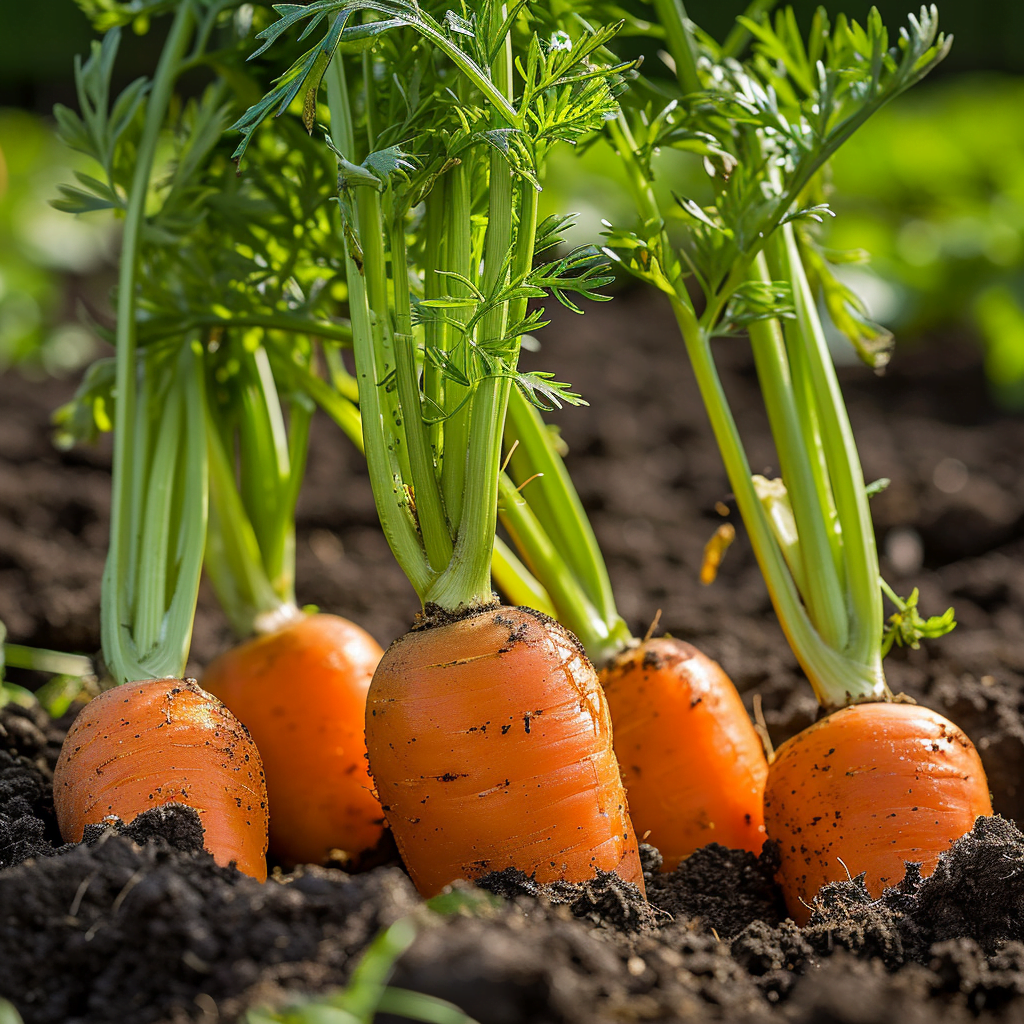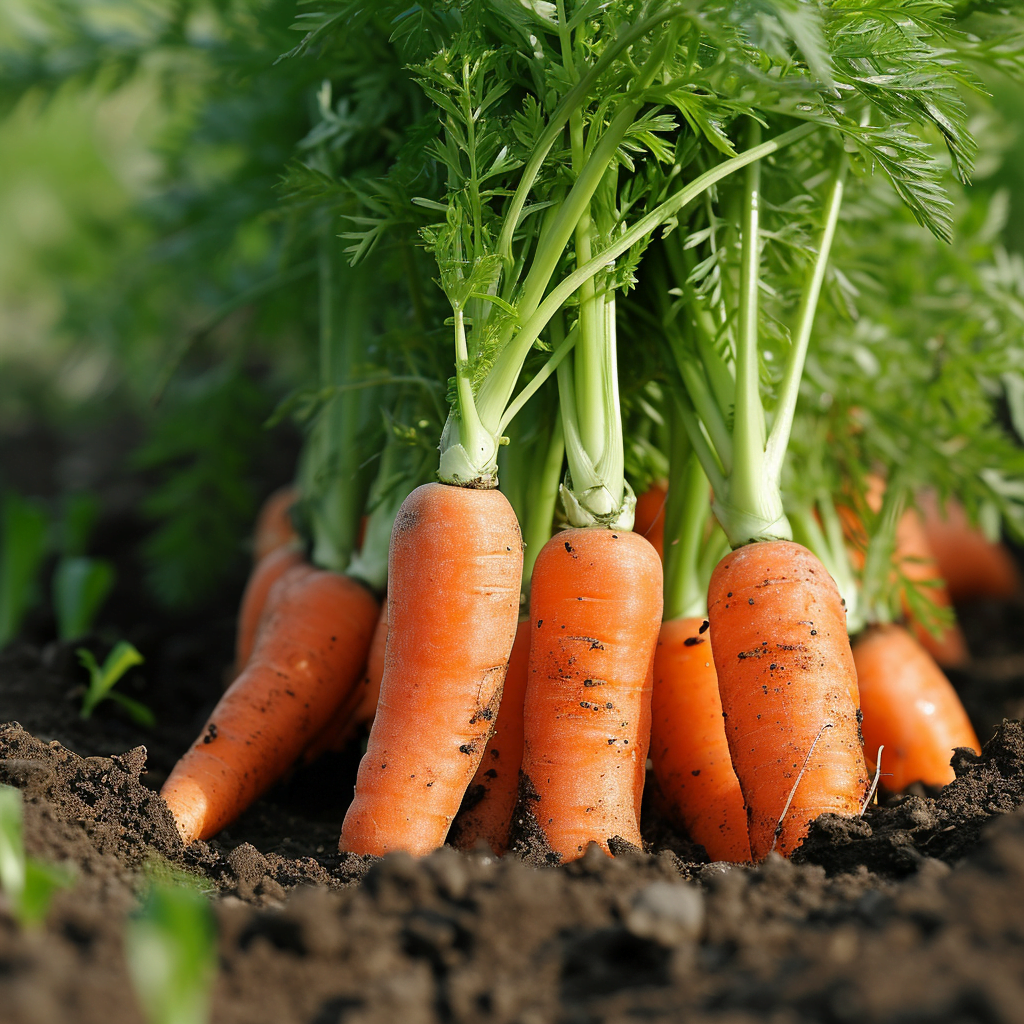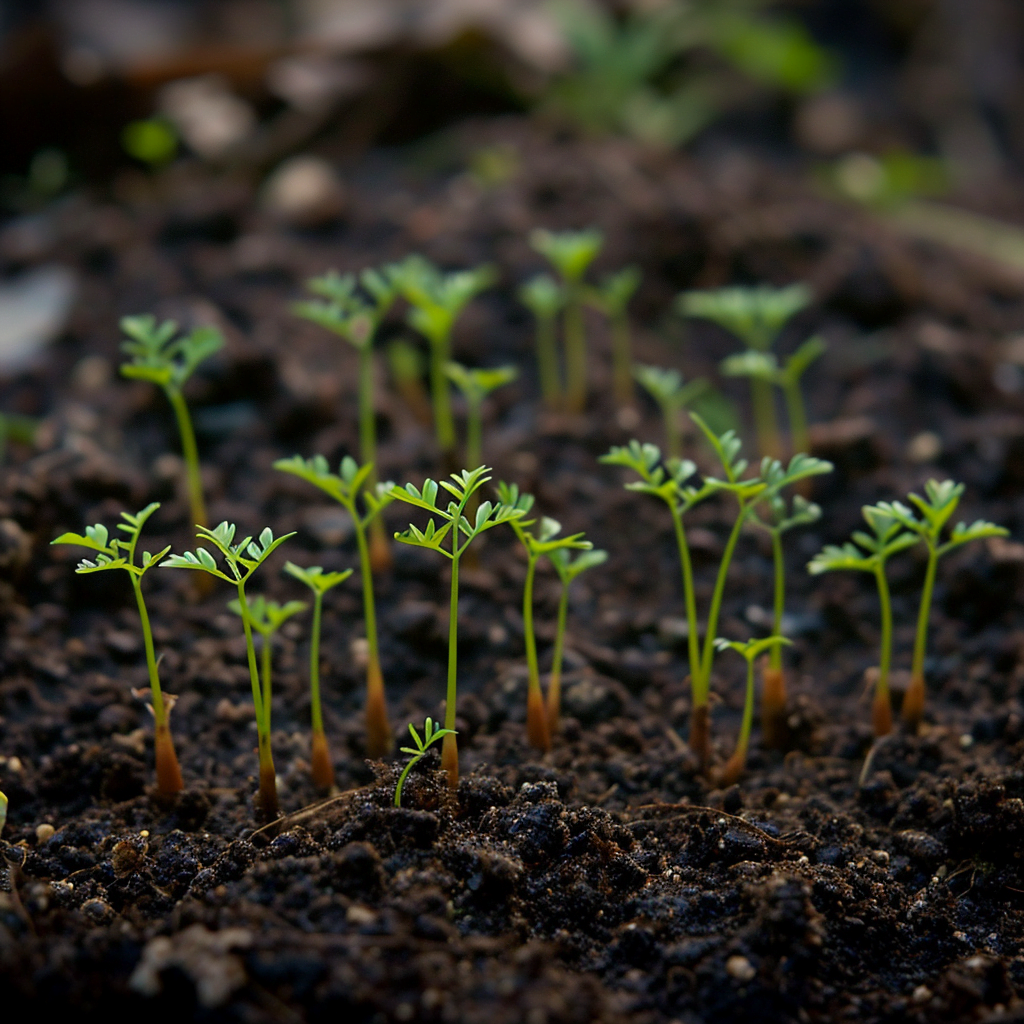Have you ever wondered why your carrots seem to grow short and fat rather than long and slender like the ones you see in the grocery store? It can be frustrating when you put in all that effort to grow your own carrots, only to be met with stumpy results. In this article “Why do my carrots grow short and fat?”, we will explore the various factors that can contribute to the size and shape of your homegrown carrots, helping you understand why they may not turn out as expected. So, if you’re ready to dig into the mystery behind your short and fat carrots, keep reading!
Factors Affecting Carrot Growth
Carrots are a popular vegetable known for their bright orange color and sweet flavor. However, sometimes they may not grow as desired, appearing short and fat instead of long and slender. Several factors can contribute to this phenomenon, and understanding them is crucial for successful carrot cultivation. Here, we will explore the various elements that can impact carrot growth and provide insights into how to optimize each factor for better results.
Soil Composition
The soil composition plays a vital role in carrot growth. Carrots prefer loose, well-draining soil that is rich in organic matter. If the soil is too compacted or has a high clay content, it can hinder root development and limit the size and shape of the carrots. Moreover, compacted soil may prevent proper penetration of moisture and nutrients, leading to stunted growth.
On the other hand, sandy soils, although loose and well-draining, may not retain sufficient moisture and nutrients, resulting in shorter and plumper carrots. Therefore, it’s essential to strike a balance in the soil composition to promote optimal carrot growth.
Soil pH
In addition to soil composition, the pH level of the soil also plays a significant role in shaping the growth of carrots. Carrots thrive in slightly acidic to neutral soils, with a pH range of 6.0 to 7.0. Soils that are highly acidic or alkaline can affect nutrient availability, leading to stunted or deformed carrots.
Acidic soils with a low pH can limit the uptake of essential nutrients like calcium and magnesium, resulting in shorter and misshapen carrots. Conversely, alkaline soils with a high pH can lead to nutrient deficiencies and hinder root development, causing carrots to grow disproportionately.
To avoid short and fat carrots related to soil pH, it is important to regularly test the soil pH and make adjustments using organic matter or soil amendments to maintain the ideal pH range.
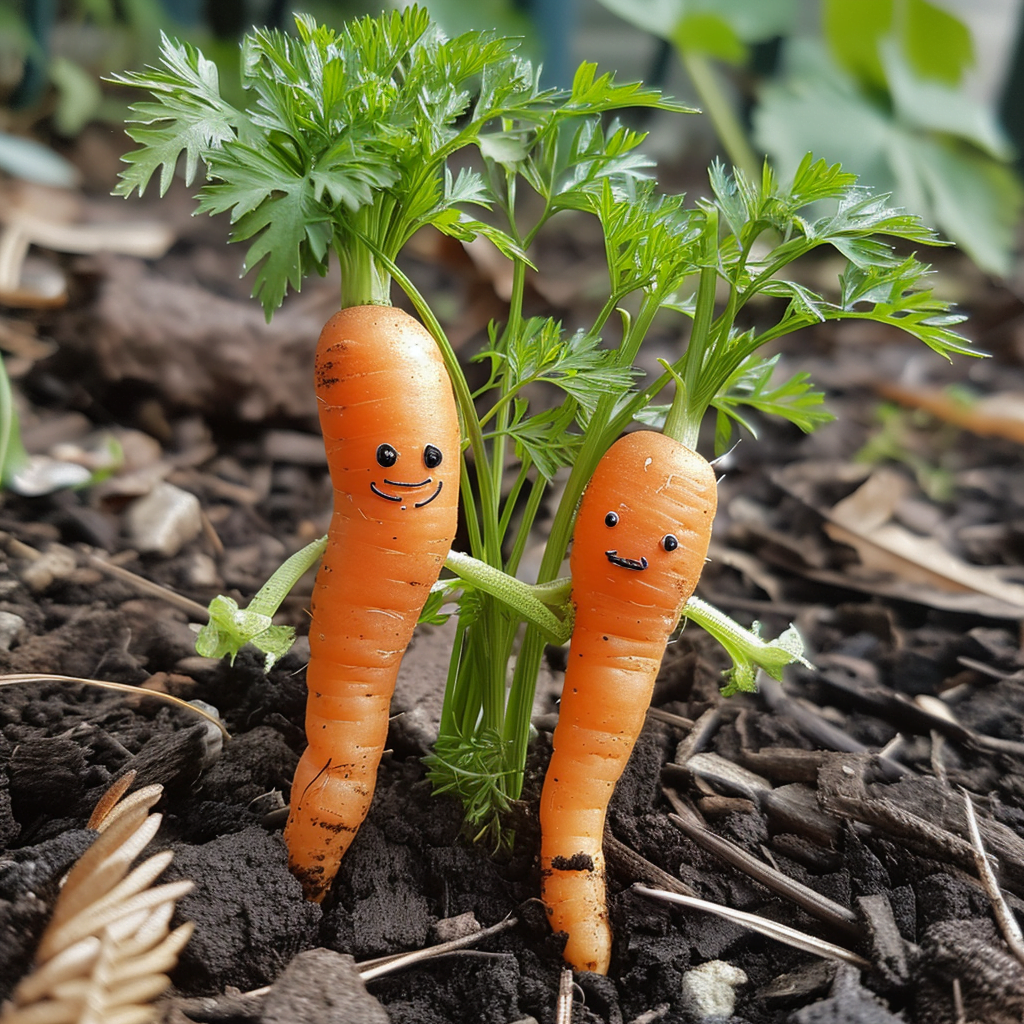
Seedling Quality
The quality of seedlings used for carrot cultivation can also impact the ultimate size and shape of the carrots. Seed quality plays a crucial role in determining the overall health and vigor of the plant. Using high-quality seeds from reliable sources ensures strong germination rates and healthy seedlings.
It’s essential to select carrot seeds that are fresh, viable, and disease-free. Older or poor-quality seeds may have a lower germination rate, resulting in uneven growth and an increased likelihood of producing short and fat carrots. Additionally, diseases present in the seeds can transfer to the young plants, further compromising their health and development.
Nurturing healthy seedlings is equally important. Providing adequate water, proper nutrition, and optimal growing conditions will help ensure robust and vigorous growth, setting the stage for the development of long and slender carrots.
Spacing
The spacing between carrot plants can significantly impact their growth. Plant density and the need for subsequent thinning have a direct influence on the final size and shape of the carrots.
Carrots have a capacity to adapt their shape to the space they have. When planted too closely together, they will compete for resources and grow into smaller, fatter carrots. Insufficient space prevents the roots from growing freely and restricts their elongation, resulting in short and stunted carrots.
To avoid this problem, it is crucial to provide adequate spacing between the plants during sowing. This allows each carrot to stretch its roots and grow to its full potential. Additionally, proper thinning of crowded seedlings after germination ensures sufficient space for individual carrots and prevents overcrowding, enabling them to develop into long and slender shapes.
Nutrient Imbalance
The presence of nutrient imbalances in the soil can also lead to short and fat carrots. Insufficient availability or excess of specific nutrients can negatively impact carrot growth and result in deformed shapes.
One common nutrient deficiency that affects carrot growth is a lack of phosphorus. Low phosphorus levels can result in stunted growth and underdeveloped roots. To avoid this, incorporating organic matter or adding phosphorus-rich fertilizers to the soil before planting can help ensure an adequate supply of this essential nutrient.
Conversely, excessive nitrogen in the soil can also lead to carrot deformities. Nitrogen encourages lush foliage growth at the expense of root development. Carrots that receive excess nitrogen will divert their energy towards the production of foliage and develop large, leafy tops but small, stumpy roots.
Another crucial nutrient imbalance that can hinder carrot growth is potassium deficiency. Potassium plays a crucial role in root development and overall plant health. Its deficiency can lead to poor root growth, resulting in short and stunted carrots.
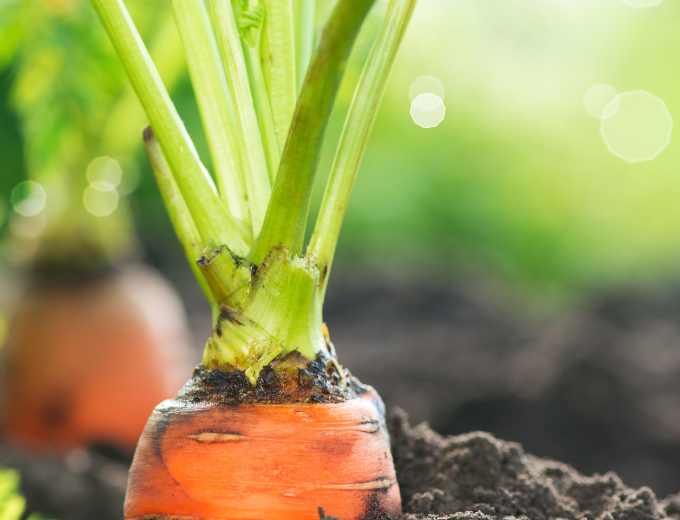
Watering
Proper watering practices are essential for optimal carrot growth. Both inadequate watering and overwatering can have detrimental effects on root development, ultimately leading to short and fat carrots.
Inadequate watering can cause the soil to dry out, making it difficult for the carrots to absorb water and nutrients. In such cases, the roots may stop elongating, resulting in shorter carrots.
On the other hand, overwatering can lead to waterlogged soil, which restricts oxygen availability to the roots. Consequently, this reduces nutrient uptake and hampers proper root growth, resulting in deformed and stunted carrots.
To ensure optimal watering, it is important to maintain moist but not saturated soil conditions throughout the growing season. Consistent moisture levels, achieved through regular and controlled watering practices, promote healthy root development and contribute to the production of long and well-formed carrots.
Temperature
Carrots have specific temperature requirements for optimal growth, and deviations from these ideal ranges can affect their size and shape.
Hot and dry conditions can cause carrots to become short and fat. Under such circumstances, the plant focuses on conserving water rather than elongating roots, resulting in stunted growth. Additionally, excessive heat may cause the roots to become hardened and fibrous, further reducing their size and elongation.
Similarly, cold temperatures can also hinder carrot growth. If planted in the cold season or exposed to frost, the plant’s growth may slow down or stop altogether. This can lead to smaller and stunted carrots.
To avoid suboptimal temperature conditions, it is advisable to choose the appropriate carrot varieties for the local climate and ensure planting during the recommended times when temperatures are within the favorable range.

Sunlight Exposure
Carrots require adequate sunlight for healthy growth and development. Improper sunlight exposure can impact their shape and size.
Insufficient sunlight can lead to weak and spindly plants with short and stunted roots. Carrots rely on sunlight for photosynthesis, the process that enables them to convert sunlight into energy. Without enough sunlight, their growth and root development are compromised.
Conversely, excessive sunlight can also be detrimental to carrot growth. Intense heat from prolonged exposure can cause the soil to dry out quickly, making it difficult for the plant to absorb sufficient water. This can lead to stunted growth and the production of short and fat carrots.
Ensuring that carrot plants receive the recommended amount of sunlight, typically around 6 to 8 hours per day, is crucial for promoting optimal growth and the development of long and slender carrots.
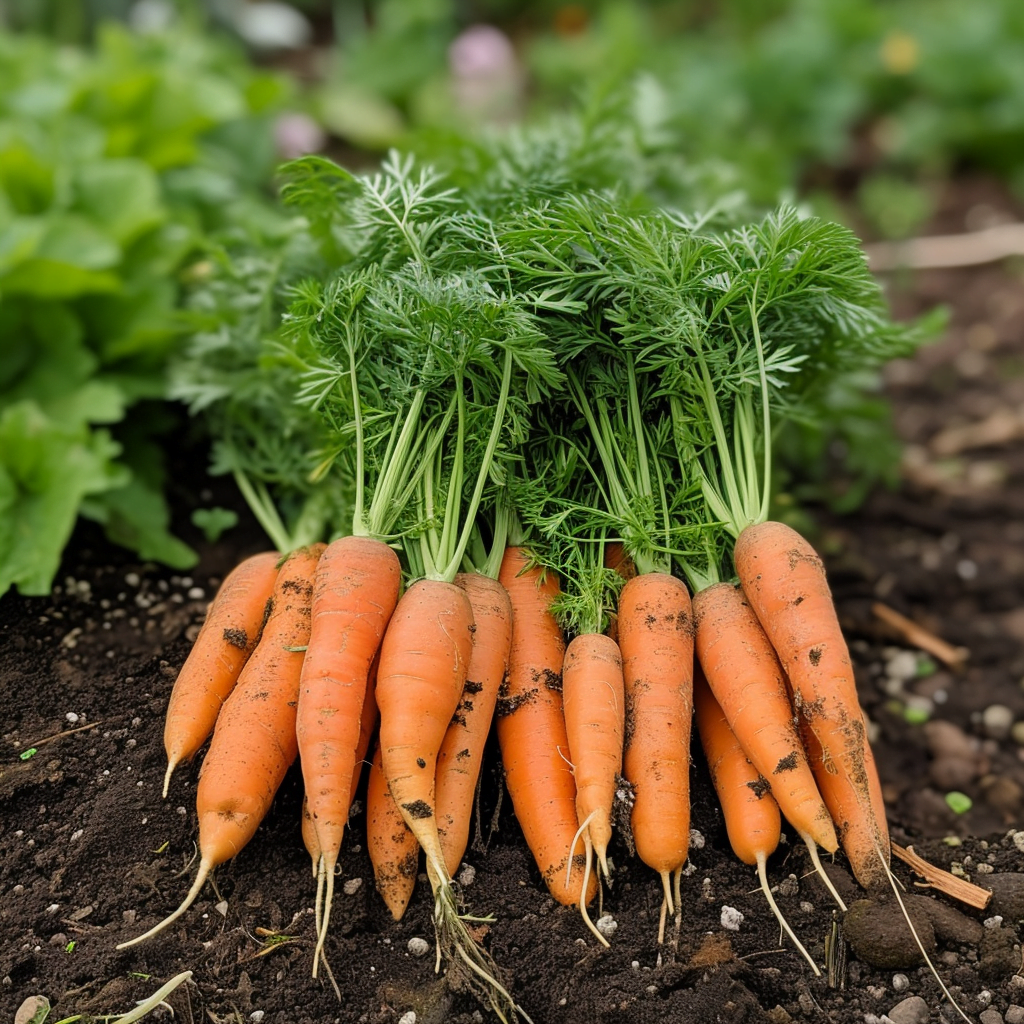
Pest and Disease Infestation
Pests and diseases can cause significant damage to carrot plants, affecting their growth and resulting in short and stunted carrots. Several common culprits can negatively impact carrot development.
Carrot fly infestation is a common problem that affects the growth of carrots. The larvae of carrot flies feed on the roots, causing them to become discolored and malformed. This restricts proper root elongation and leads to shorter and misshapen carrots.
Root knot nematodes are microscopic worms that parasitize the roots of carrot plants. Their presence can cause the roots to form small, knotty galls, impairing their ability to grow and resulting in shorter and distorted carrots.
Various fungal diseases, such as leaf blights and rot, can also hinder carrot growth. These diseases weaken the plant’s overall health, limiting root development and causing them to grow poorly.
Proper pest and disease management strategies, including crop rotation, regular monitoring, and timely intervention with organic or chemical controls, can help prevent infestations and maintain healthy carrot growth.
Competition and Crowding
Competition and crowding from weeds or neighboring plants can also affect carrot growth. When carrots have to compete with weeds for nutrients, water, and sunlight, their growth is impeded, resulting in shorter and less robust roots.
Insufficient space for carrot plants can similarly restrict their growth and lead to the production of shorter and fatter carrots. Carrots need adequate room for their roots to stretch out and grow, enabling proper development and elongation.
To prevent competition and crowding, regular weeding and maintaining an appropriate spacing between carrot plants are essential. Thinning seedlings, as mentioned earlier, is crucial to allow each carrot enough room to grow, preventing overcrowding and the subsequent production of short and fat carrots.
In conclusion, several factors can contribute to the growth of short and fat carrots. Understanding the impact of soil composition, pH levels, seedling quality, spacing, nutrient imbalances, watering practices, temperature, sunlight exposure, pest and disease infestation, and competition is crucial for successful cultivation. By optimizing each of these factors and providing the right conditions for carrot growth, gardeners can increase the chances of harvesting long, slender, and flavorful carrots.
